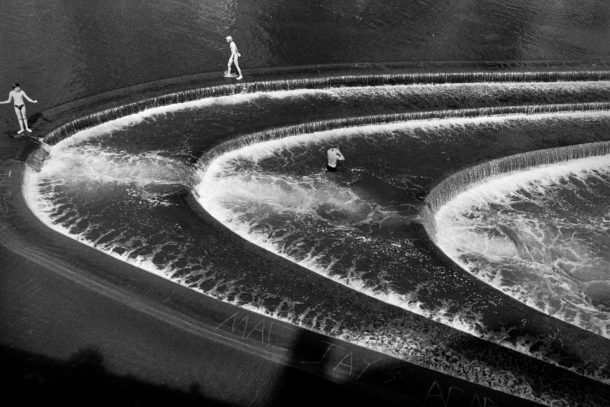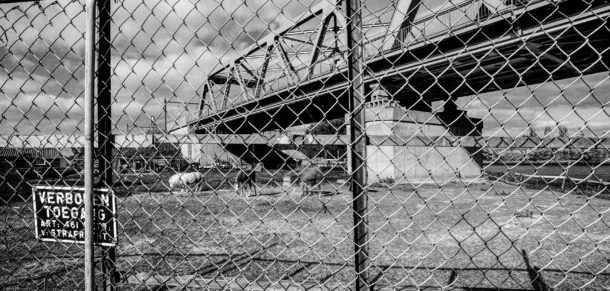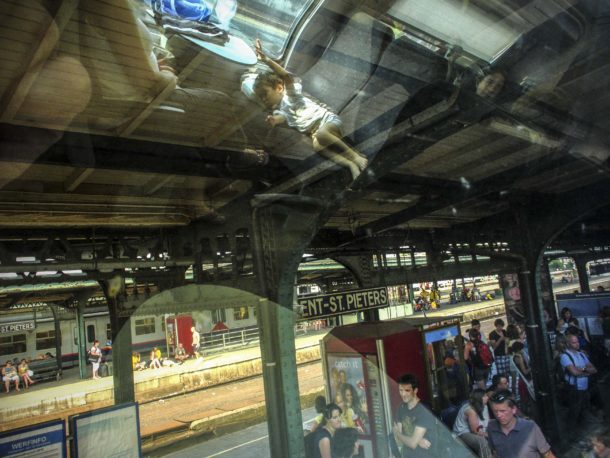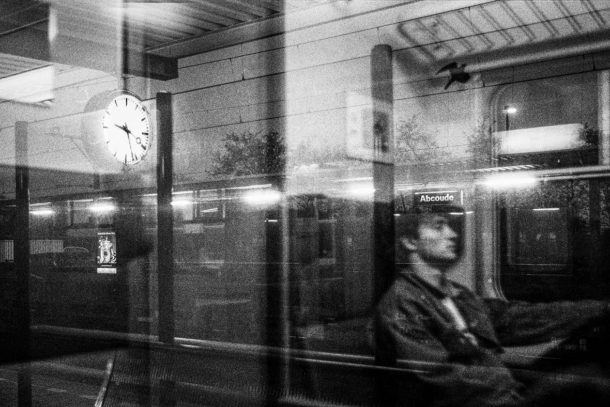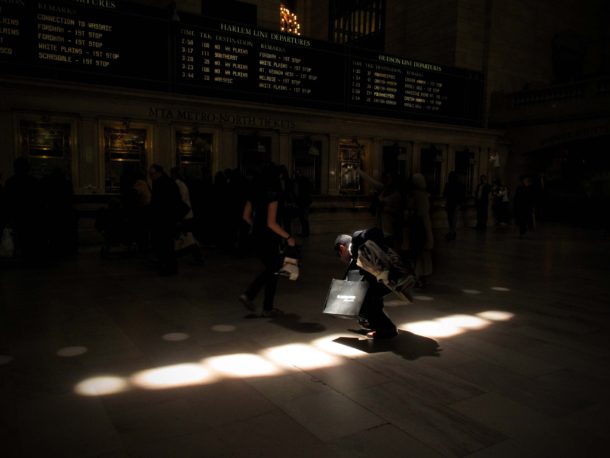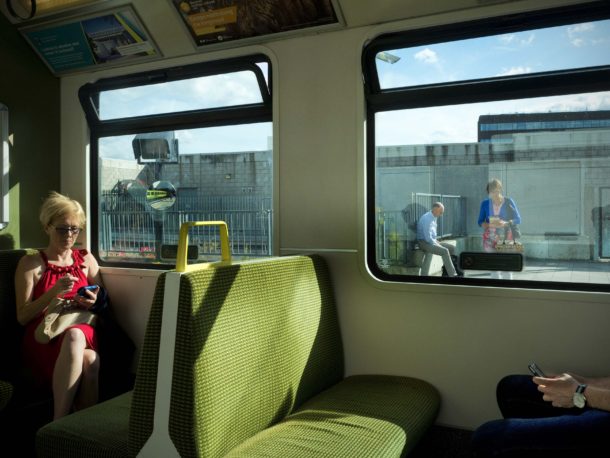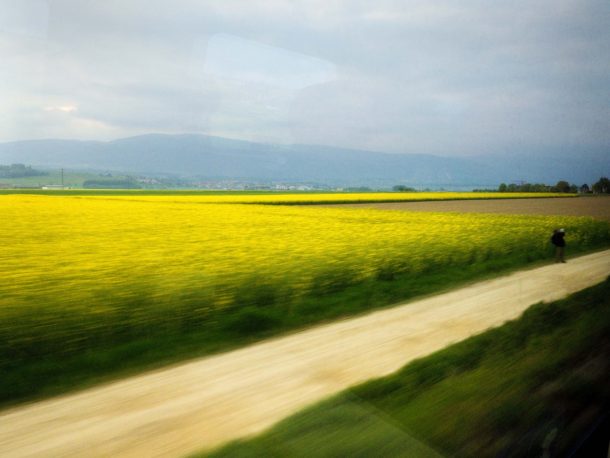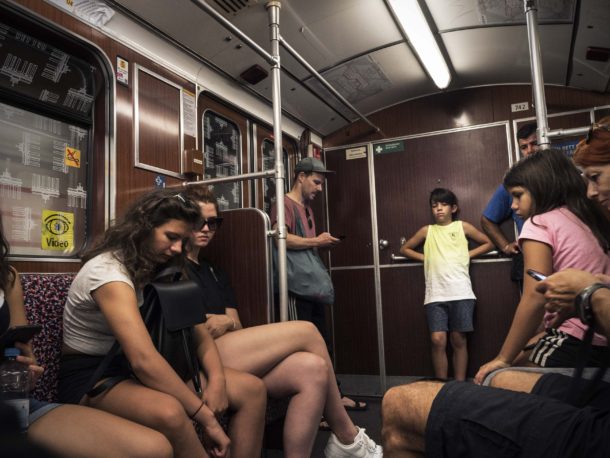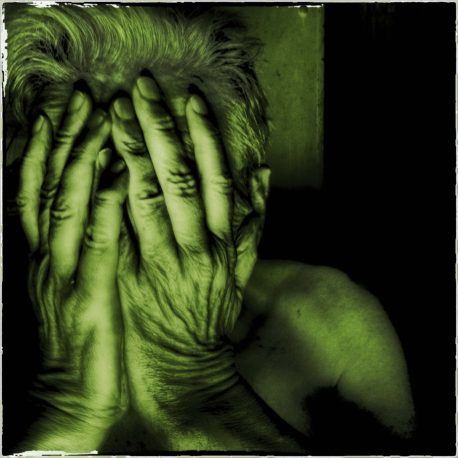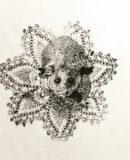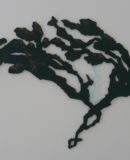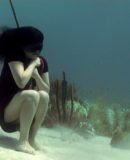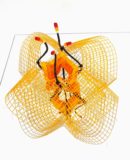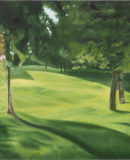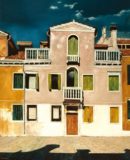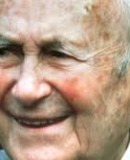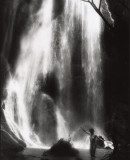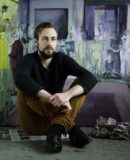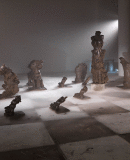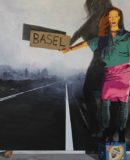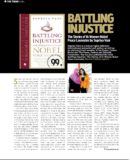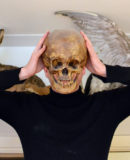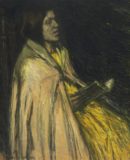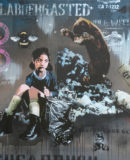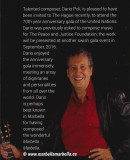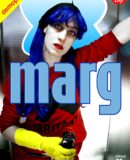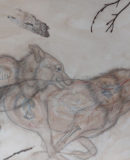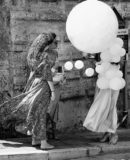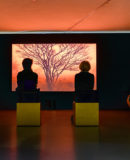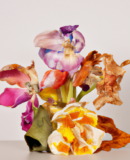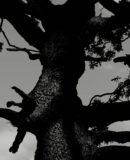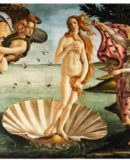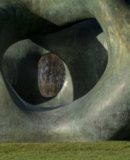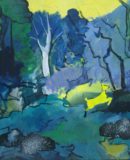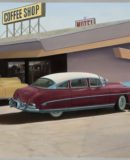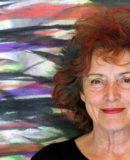World Fine Art Professionals and their Key-Pieces, 459 - Jaap Bijsterbosch
World Fine Art Professionals and their Key-Pieces, 459 – Jaap Bijsterbosch
Jaap Bijsterbosch has been interested in trains and railway lines since his childhood. He had a model railway. He often went to the station of his hometown Zwolle to watch trains. But also to look at the waiting, the saying goodbye, the haste of the travelers. At the age of 17 he started taking photos of trains and stations.
I speak to Jaap Bijsterbosch in the Gallery WM in Amsterdam a week after the opening of his exhibition ‘About Iron Lines’ about railways, train journeys, train passengers, stations.
“When I was 11 years old, my father pushed his camera into my hands on Queen’s Day. “Are you taking a picture of Peter?” I looked through the viewfinder, had my brother climb up a wall, pressed the button and thought: “Now this image is there forever.” That was the first time I was a photographer.” At the age of 16 he bought an enlarger from V & D, built a darkroom in the attic and taught himself to develop and enlarge film with the help of Peter Carpentier’s ‘Prisma Photo Book’. Photography was mainly an important hobby.
In 1991, the photo space at home, which was now necessary for his profession, had to be converted into a baby room. He found a new office near the Amsterdam railway line in Amsterdam East, he said at the opening of the exhibition. “Every two minutes I heard the train pounding over the bridge: boom-boom, boom-boom, boom-boom. I got an image of how the railway lines wound through the city like a long iron ribbon. Then I thought that if I wanted to photograph it, the photos would have to be panoramic to emphasize the elongation of the infrastructure. I grabbed a camera and a tripod, went taking photographs that same afternoon, and took the first photos of the series ‘Iron Roads’, black and white photos of railway lines in the (urban) landscape.
Teacher first
He graduated as a teacher in 1973. He was able to start working straight away, first in Zwolle, and from 1975 in Amsterdam, first as part of alternative military service. There was a serious shortage of teachers at that time. “I was a teacher with heart and soul. In 1978 there were too many teachers again. This was related to the end of the post-war baby boom. I had to do something else. The idea of photography came up again.”
Photography again
From 1979 onwards, he immersed himself in photography again in Centrum De Moor in his hometown of Amsterdam through courses given by Fons Timmer and Corinne Noordenbos. In 1983 he made a photo trip to Italy together with Rob Ferençik. As a result of the results, both received a joint assignment from the Amsterdam Art Fund for a photo trip to Great Britain. He discovers his theme: Places. “Places, what happens in places. What do people do, in places and with places. I also started taking self-portraits.” He calls his photos of places ‘Maps of atmosphere’.
He shows a photo taken during the photo tour in Great Britain in 1984, a stepped waterfall near Bath, southern England. Little boys in swimming trunks are having fun in all the water. He used an orange filter for contrast to achieve a high-contrast end result. “With analog photography you have to make technical decisions in advance to achieve a certain result.” The photo is a key work. Just like another, taken on the same trip, a stone formation at St. Andrews, where suddenly a man appears in the right corner with his daughter. In the other corner a mischievous boy is watching. Ferençik took photos in the same places in his personal style. At a different time, so as not to get in each other’s way. The gentlemen’s results were presented side by side, so that the interaction created an extra layer of meaning.
In 1993 he created the series ‘The Iron Road in North Holland’ for the province of North Holland, about the landscape and infrastructural aspects of railway lines. In 1994 he did the same for the city of Utrecht. In addition, a photo from a similar series from Amsterdam appears on the address wrappers of the magazine ‘Ons Amsterdam’ (Our Amsterdam) throughout the year.
He regularly takes his analog camera on the train, photographing both scenes on the train and the landscape flashing by. He is increasingly looking at the alienation in the public living room that the train compartment sometimes is. He also likes to play with the reflections in the glass of the train window.
He also makes a series about forests and trees. He shows a number of examples. “My own idea. It was exhibited a number of times. I called the series ‘Plant Light’. It’s about light and places where a kind of nature plays a role. Real nature does not exist in the Netherlands. I have also been to the West of America. That’s nature: Death Valley, Zabriskie Point. Nature is unapproachable, has no morality.”
From analog black and white to digital color
In 2004, Jaap bought his first digital compact camera. He almost immediately takes it with him on the train to take photographs, often somewhat hidden, at stations and in compartments. He invented for himself the use of areas of color as a means of composition.
The exhibition includes various photos from compartments. “Something happens in those places. I wanted to capture that, if possible in a special way.” He agrees on a publication with the magazine ‘Foto’, which is canceled at the last minute because the editors are afraid of problems related to privacy. Ultimately, a photographer, especially in a coupe, is often a kind of voyeur, which is not always appreciated. In the exhibition the voyeuristic aspect is clearly tangible in a number of images.
From 2008 he also makes self-portraits with the digital camera, something he has been doing on film since 1979. In 2017 he will show a selection of these in Gallery WM. The show ‘About Iron Lines’ features some self-portraits/selfies that have to do with trains and train journeys.
Since 2004 he has lived in Diemen, the somewhat sleepy suburb of Amsterdam. In 2006 he bought his first digital SLR camera and started photographing ‘Diemer Plekken’ (Places in Diemen). “Continuously, to this day, when I go out into the fresh air, when I go shopping. Places. What does a person do with places? How are the places arranged?” The photos have now grown into a large series in color.
Teaching positions
In 1985, Jaap became a teacher at the De Moor center. A year later, he also became a photography staff member (part-time), with his portfolio including organizing and supervising the educational offering. Later he also organizes the then famous ‘Photo Café’ every month, which was devised and initiated by colleague Leo Divendal. He continues to teach at De Moor, even when he stops as a staff member in 1992. Since 1995, he has provided a number of photography workshops every summer for the Dutch Outdoor Art Foundation (Stichting Buitenkunst Nederland). He will continue to do so until 2020.
When De Moor stopped educational activities around 2008, Jaap started at the Amsterdam Photo Academy. First as a classroom teacher, later he gives workshops in the field of mainly landscape photography. He still does that.
The emphasis in all his lessons is on the own content of the photography of his pupils and students. Jaap also shows a lot of the history of photography because as a photographer you have to learn to understand that you always take part in a tradition.
The GKf
“I was asked to do this in 1987 by Corinne Noordenbos. It felt good, I never expected it, it was a fantastic show of appreciation. I found myself in the legendary company of Eva Besnyö, Cas Oorthuys, Emmy Andriesse and Aart Klein. It was a form of recognition.” GKf is currently a wing of DuPho. “There is some form of admission. Rightly so, also out of respect for the roots of the association.”
He advises his students at the Photo Academy to join an association such as DuPho once they have graduated. “1. It is useful for solving problems, 2. You meet colleagues in an easy way, 3. Together you can get things done, but not on your own.”
What is his experience of photography life?
“The exhibition options are quite limited these days. In the 1980s more was possible than today. There are fewer accessible spaces in Amsterdam. Or you have to be at the top level straight away, but if you are a bit below that level it is more difficult.”
Getting an assignment is networking, and also luck, he continues. Because there are a lot of photographers. But the contact with colleagues is very pleasant. On behalf of the GKf, he attended the meetings of the Amsterdam Art Association for a while, to which all artistic disciplines were invited.
Once every two years there is an exhibition for each discipline in a wing of the Stedelijk Museum. “I was amazed by the many arguments among the visual artists, there was often a feeling of hatred and envy. I have always experienced a warm, collegial atmosphere among the photographers. Cordial, friendly. When I first came to GKf it was a lot of fun. That is still the case.”
About the exhibition
We take a tour of his train photos. The work covers a period of more than 40 years.
There are analogue baryta prints, hybrid black-and-white prints and many fully digital color prints. The occasionally ambiguous photos were taken over a period of more than 30 years and, in addition to providing a personal view of railways and train journeys, they also provide a picture of the development of photographer Jaap Bijsterbosch. From analog (vintage) black and white to digital color. Attention to light, frame, composition in the service of the photographic story. Sometimes very direct, sometimes observational, sometimes voyeuristic, sometimes almost archetypal.
Jaap says: “There are actually four exhibitions: The vintage prints of Iron Roads from the 1990s, the analogue black photos from the train journey that I digitized from the same period, the first digital compartment photos from the period from 2006 to 2010 and the train travel photos from the period afterward. By the way, the exhibition is a selection from hundreds of photos.”
See the selection we have made of passengers, train compartments, station halls at home and abroad with surprising views and effects.
Finally, what is his philosophy?
“I often suffer from what you could call progressive insight. I often understand things and people differently or more deeply over time. That is why I find it very difficult, if not impossible, as a photographer to stick to one theme. This exhibition is an example of this: There is one subject, but I have developed it into different themes over time.”
Photos
1) Bath (UK)1984, 2) St Andrews (UK), 1984, 3) Utrecht (NL), 1994, 4) Ghent (Bel), 2010, 5) Abcoude (NL), 1994, 6) New York 2011, 7) Dublin (Irl), 2016, 8) Yverdon (CH), 2018, 9) Berlin, 2019, 10) Selfportait 843, 2023
https://oogenblikjaap.blogspot.com/
https://www.1000fotos.org/search.pp?sourceids=58
https://gallerywm.com/WP/regarding-iron-lines-jaap-bijsterbosch-19-01-24-02-2024/
https://depthoffield.universiteitleiden.nl/2540f01en/
https://ifthenisnow.eu/nl/verhalen/over-spoorwegfotos-en-meer-een-gesprek-met-fotograaf-jaap-bijsterbosch
Disclaimer: The views, opinions and positions expressed within this guest article are those of the author Walter van Teeffelen alone and do not represent those of the Marbella Marbella website. The accuracy, completeness and validity of any statements made within this article are not guaranteed. We accept no liability for any errors, omissions or representations. The copyright of this content belongs to Walter van Teeffelen and any liability with regards to infringement of intellectual property rights remains with the author.

